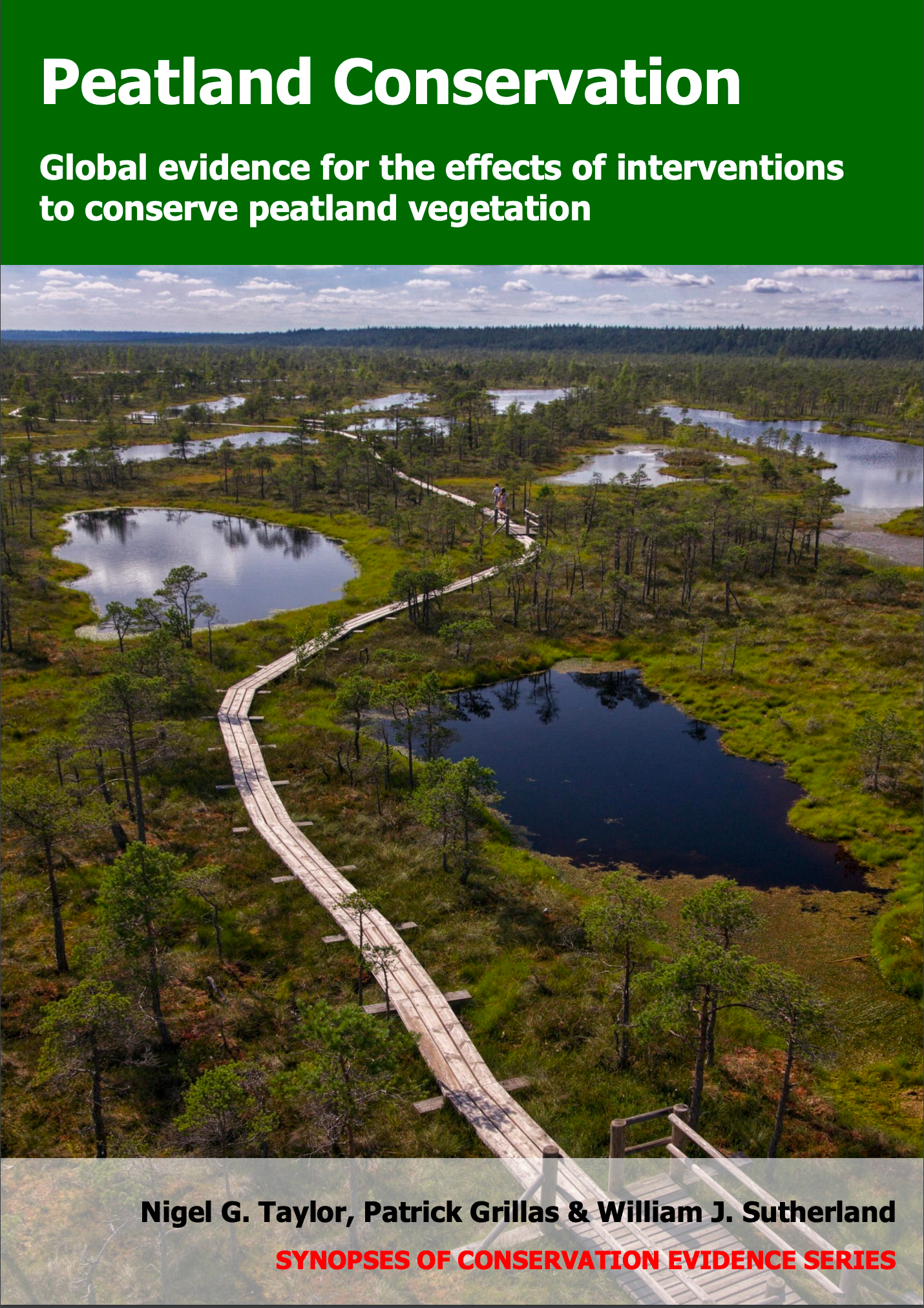Fill/block ditches to create conditions suitable for peatland plants (without planting)
-
Overall effectiveness category Likely to be beneficial
-
Number of studies: 3
View assessment score
Hide assessment score
How is the evidence assessed?
-
Effectiveness
60% -
Certainty
50% -
Harms
0%
Study locations
Supporting evidence from individual studies
A replicated study in 2003–2004 in two degraded blanket bogs in England, UK (Evans et al. 2005) reported that gullies blocked with dams had no vegetation cover after approximately six months. In late 2003, 389 blockages were installed along 16 gullies. A mixture of blocking techniques was used: wooden fences, plastic fences, stone walls or stacked hessian sacks. Vegetation cover was visually estimated in May to July 2004.
Study and other actions testedA replicated study in 2006 in a blanket bog in England, UK (Armstrong et al. 2008) reported that drainage ditches blocked with peat developed some vegetation cover but were mostly bare peat. All five blocked drainage ditches developed some vegetation cover, although total vegetation cover was <50% in four of them. Across all five ditches, cover of common cottongrass Eriophorum angustifolium was 5–30%.Cover of Sphagnum moss was <1–20%. One ditch (also recently burned) had 60% cover of heather Calluna vulgaris. The study noted correlations between vegetation cover, slope and soil/water chemistry. In January 2003, five ditches were blocked with peat sods. Vegetation cover was estimated in spring 2006 (A. Armstrong pers. comm.).
Study and other actions testedA site comparison study in 2009–2011 in a fen in Michigan, USA (Bess et al. 2014) found that a ditch filled with peat spoil developed similar vegetation cover to undisturbed areas of the fen, but contained more plant species. After two years, the filled ditch and adjacent areas of undisturbed fen had similar cover of total vegetation (165 vs 180%), sedges (81 vs 80%), grasses (15 vs 10%), forbs (33 vs 20%) and bryophytes (29 vs 40%). However, there were more plant species in the filled ditch (49 species) than undisturbed fen (40 species). Results after one year were similar, except that the ditch had lower total vegetation cover than undisturbed fen (126 vs 188%) and lower bryophyte cover (18 vs 40%). In 2009, a ditch (dug in 2007 as a fire break) was filled with adjacent spoil (still moist and containing fen plant seeds). In 2010 and 2011, vegetation cover was recorded in sixty 1 m2 quadrats along the length of the ditch: 20 within it and 20 on either side. These were placed in areas not sown with additional seeds.
Study and other actions tested
Where has this evidence come from?
List of journals searched by synopsis
All the journals searched for all synopses
This Action forms part of the Action Synopsis:
Peatland Conservation
Peatland Conservation - Published 2018
Peatland Conservation





)_2023.JPG)














